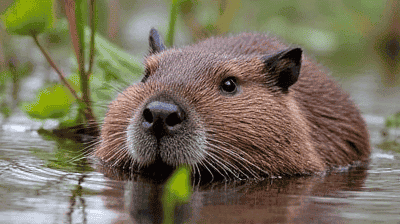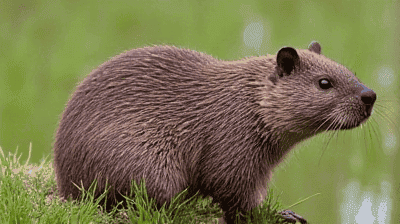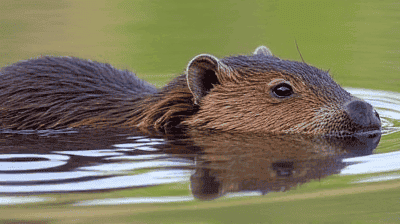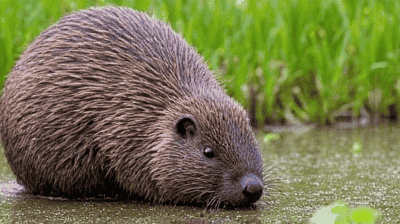
Beavers, often referred to as nature's engineers, play a vital role in maintaining and restoring wetland ecosystems. Their unique behavior of building dams and constructing lodges creates significant changes in their environment, leading to increased biodiversity and healthier ecosystems. As wetlands face increasing pressures from urban development, climate change, and pollution, the reintroduction of beavers in various regions has emerged as a promising conservation strategy.
Beavers (Castor canadensis in North America and Castor fiber in Europe) are semi-aquatic rodents known for their remarkable ability to alter their environment through dam-building. These animals are primarily herbivores, consuming a variety of woody plants, leaves, and aquatic vegetation.
Damming: Beavers construct dams using branches, mud, and other materials to create ponds. These ponds serve as habitats for the beavers and alter the surrounding landscape by flooding areas that were previously dry.
Lodges: Beavers build lodges—a structure that provides safety from predators—often in the middle of their created ponds. Lodges are made from similar materials as dams, typically with underwater entrances for protection against threats.
Territorial: Beavers are territorial animals and usually live in family units that consist of a monogamous pair and their offspring. They maintain their territories by marking with scent and maintaining their dams.
Beavers are not just fascinating creatures; their activities provide numerous ecological benefits that contribute to the health and resilience of ecosystems:
Wetland Creation and Maintenance: By building dams, beavers create ponds that serve as wetlands. These wetlands are crucial for biodiversity, water filtration, and flood control.
Biodiversity Enhancement: Beaver-created wetlands support a diverse range of plant and animal species. They provide habitats for fish, amphibians, birds, and insects, increasing overall biodiversity.
Water Quality Improvement: Wetlands help filter pollutants, sediments, and excess nutrients from runoff, improving water quality in downstream ecosystems.
Carbon Sequestration: Peat accumulation in wetlands facilitates long-term carbon storage, which contributes to climate change mitigation by sequestering carbon dioxide from the atmosphere.
Flood Mitigation: Beaver dams slow down water flow and increase water retention, helping to reduce flooding downstream by absorbing excess rainwater.

Despite their important ecological role, beaver populations have faced significant declines due to various human activities:
In the past, beavers were extensively hunted for their fur, which was highly valued in the fur trade. This led to substantial reductions in their populations and altered the landscapes they had helped shape.
Habitat Loss: Urban development, agriculture, and deforestation have led to the destruction of natural habitats, making it difficult for beaver populations to thrive.
Trapping and Hunting: Although regulated in many areas, trapping for fur or pest control continues to take a toll on local beaver populations.
Damming and Water Management: Infrastructure projects, such as dam construction and river channelization, can disrupt beaver activity and their ability to create wetlands.
Conflict with Human Activities: Beavers can sometimes be seen as pests, particularly when their dams lead to flooding of agricultural land or residential areas. This conflict often results in lethal removal.
With the realization of the ecological benefits provided by beavers, conservationists have begun to advocate for their reintroduction in areas where they have been extirpated or where their populations have dwindled. This strategy aims to harness the beavers’ natural behaviors to restore ecosystems effectively.
Restoration of Wetlands: Returning beavers to landscapes helps accelerate wetland restoration without significant human intervention, relying instead on natural processes.
Cost-Effective Solutions: Compared to traditional wetland restoration methods that often require extensive human resources and funding, beaver reintroduction is a low-cost alternative that can yield long-lasting results.
Natural Resilience: Beaver-created ecosystems are able to adapt and respond to environmental changes, promoting resilience against climate impacts like drought and flooding.
Biodiversity Boost: Reintroducing beavers can increase habitat diversity, providing critical resources for various plant and animal species and contributing to overall ecosystem health.
Several successful beaver reintroduction projects around the world illustrate the positive impact these animals can have on ecosystems:
In Yellowstone National Park, beaver populations were historically decimated but have since been reintroduced with significant results. The restoration of beavers has enhanced stream conditions, increased biodiversity, and stabilized water levels, proving productive for both wildlife and park infrastructure.
In Scotland, the Scottish Beaver Trial served as a pioneering project for reintroducing beavers to the British Isles. The trial demonstrated improved wildlife habitats, enhanced biodiversity, and limited negative impacts on agriculture, increasing support for beaver conservation efforts.
Across various states in the U.S., local land trusts and conservation organizations have successfully reintroduced beavers. These projects have shown that strategic beaver management can help restore wetlands and improve local ecosystems while ensuring compatibility with human land use.

Successfully reintroducing beavers involves careful planning, monitoring, and management to ensure that both wildlife and human interests are considered. Key practices include:
Identifying suitable areas for beaver reintroduction is crucial. Ideal sites are typically:
Community engagement is essential for the success of beaver reintroduction projects. This involves:
Once beavers are reintroduced, ongoing monitoring is necessary to assess their impact on ecosystems and adapt management practices as needed. Monitoring can include:
Working with local, state, and federal agencies helps ensure that beaver reintroduction is compatible with existing land management policies. This collaboration can also facilitate regulatory support and funding for conservation efforts.
While beaver reintroduction can yield substantial ecological benefits, several challenges and considerations must be addressed:
Conflict can arise when beavers’ activities lead to flooding of agricultural fields or residential properties. It is essential to implement conflict mitigation strategies such as:
Beaver reintroduction initiatives may face funding constraints, making it challenging to conduct necessary monitoring and management activities. Creative solutions, such as community fundraising and partnerships with conservation organizations, can alleviate some of these challenges.
Every ecosystem is unique, and the local ecological context must be considered when reintroducing beavers. The availability of appropriate habitat, hydrology, and existing wildlife dynamics will dictate the success of the initiative.

Beavers play an undeniably crucial role in restoring and maintaining wetland ecosystems. Their unique ability to engineer their environment offers a powerful opportunity for conservationists to leverage natural processes in habitat restoration. The reintroduction of beavers not only enhances biodiversity and water quality but also presents a cost-effective approach to wetland management.
As we face growing environmental challenges, the return of beavers to their rightful place in ecosystems provides an example of how nature can be an ally in addressing these challenges. Through careful planning, community engagement, and effective management, we can ensure a thriving future for beavers and the invaluable wetlands they help restore.
By recognizing and valuing the ecological services provided by beavers, we can embrace a future that fosters biodiversity and sustainability. Investing in beaver reintroduction initiatives is an investment in the health of our ecosystems and the well-being of future generations.